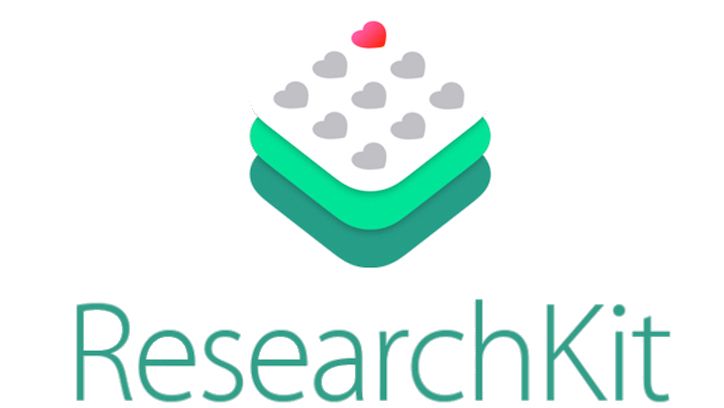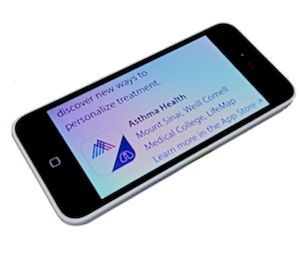ResearchKit Asthma Study Highlights Pros and Cons of Mobile Research
A wide reach and vast accesibility allowed the researchers to see nationwide data and detect trends, but the program suffered from the same natural enthusiasm decay that any mobile app does.

As much a study of ResearchKit as it was of asthma, a new report in Nature Biotechnology was able to identify several of the advantages and disadvantages inherent in conducting medical research using Apple's platform. A wide reach and vast accesibility allowed the researchers to see nationwide data and detect trends, but the program suffered from the same natural enthusiasm decay that any mobile app does.
The Asthma Mobile Health Study, or AMHS, utilized Apple’s ResearchKit platform to enroll and monitor thousands of asthma patients starting in 2015. Early media attention led to a glut of downloads for the application, which appeared in the App Store as the Asthma Health Application (AHA). The app was downloaded nearly 50,000 times in the first 6 months following launch, with more than 80% of those downloads coming from users in the United States. Only people in the US were eligible to take part in the study, and downloads did not necessarily ensure enrollment, with 7,593 people completing the final enrollment process.
The app asked users to complete daily and weekly surveys in order to log their treatment adherence, symptoms, and environmental triggers for those symptoms. Out of those who enrolled, the researchers split the cohort based on their engagement with the application: 6,470 users completed at least one of the study’s surveys and comprised the “Baseline” group, within which the “Robust” group included 2,317 respondents who smoked less than 200 cigarettes over the year, had no other lung disease, and completed at least 5 of the surveys. There was overlap with the smallest group in the study, as 131 out of a total 175 users deemed “Milestone” participants also falling into the Robust group. Milestone users were those who made it through to complete a survey of the same name at a distance of 6 months from initiation.
The nature of the study, being self-selected, nationwide, and only available to those with iPhones, created a different demographic than what the Centers for Disease Control and Prevention lays down as the actual cross-section of asthma patients in the US. “AHA users tended to be younger, wealthier, more educated, and were more often male than asthma patients in the CDC asthma population,” the study authors wrote. Majorities among the section of the Baseline group that had their personal data successfully recorded actually reported being males and also having a personal income north of $60,000 per year. When the dust settled from the app’s initial publicity, the enrollment began to round into a more standard demographic distribution: “The gender distribution of the cohort recruited later more closely approximated the CDC asthma population statistics,” the authors noted.
The deviations from CDC norms did not end with those demographic features, but also included condition severity. Baseline users reported higher instances of hospitalization (6% as opposed to the CDC’s 2%) and emergency department visits (11% to 8%).
All in all, the study produced nearly 80,000 completed daily surveys and 11,000 completed weekly surveys over a 6 month timeframe. Over 93% of baseline users completed at least one daily survey and about 35% completed at least one weekly, numbers the researchers say run consistent with the “exponential decay function as observed in other mobile health research studies.”
The data collected itself was consistent with expectations of asthma patients. In the Robust cohort, 1,621 users voluntarily submitted at least one peak flow reading during the study: “Consistent with clinical expectation, we detected a positive correlation between daily or nightly symptoms and rescue inhaler use (n = 979 and n = 761, respectively), whereas these same variables were negatively correlated with peak flow values (n = 235 and n = 173, respectively).”

Most unique, and encouraging, about the nature of the study was its ability to correlate geographic environmental trends with asthma symptoms. The researchers observed that “before 1 April 2015, a greater percentage of users reported pollen as a trigger in Southern regions of the United States (where pollen counts were higher) than in Northern regions,” and they were able to identify that participants from the Southern states reported extreme heat as an asthma trigger most frequently. It was also able to link asthma exacerbations with ongoing events: “There was a marked increase of participants reporting air quality triggers in regions affected by the summer 2015 Washington state wildfires during the corresponding time periods.”
The researchers note that a “modest majority” of participants reported that the AHA “was useful in helping them manage their asthma.”
While the app did not produce any breakthroughs in clinical understanding of asthma, it was not necessarily intended to: what it did do was illustrate both the advantages and disadvantages of mobile research platforms like ResearchKit. The study authors emphasize the impressive enrollment capabilities, noting that the 5 initial ResearchKit-based apps combined to recruit more than 15,000 participants in their first day. Despite high smartphone ownership among black Americans, “use of the Android platform is more common in some racial and/or ethnic groups,” and only 5% of the AHA users were black (compared to 13% of the US population), which the study referred to as “an under-representation commonly encountered in clinical research in general.”
Another drawback was the lack of a face-to-face relationship between participant and researcher, changing the dynamic of patient-reported outcomes (PROs). Still, standard clinical research often includes take-home paper journals to enable the recording of symptoms, so it is unknown to what extent the sincerity of PROs deviated in this study from more conventional ones.
The researchers were encouraged by the work overall, pointing specifically to the case of the 2015 Washington state wildfires as an example of how “smartphone-based technology could provide innovative, scalable solutions for clinical research aspirations that were logistically not feasible or cost-prohibitive in the past.”
“In summary,” they write, “the consistent trending of variables that we expect to be interrelated based on our knowledge of the disease, the tracking of symptoms with known environmental triggers, and the expected correlation among symptoms, medication use, and lung function in a subset of patients for whom lung function was measured strongly suggest the validity of this new research-data collecting method.”
The full study, entitled “The Asthma Mobile Health study, a large-scale clinical observational study using ResearchKit,” was published this week in Nature Biotechnology. It was led by Yu-Feng Yvonne Chan, MD, PhD, of Mount Sinai, pictured above. Several other ResearchKit-based studies are ongoing, including a concussion tracker developed by New York University, a COPD app that integrates with the Apple Watch, and a rheumatoid arthritis study sponsored by GlaxoSmithKline.